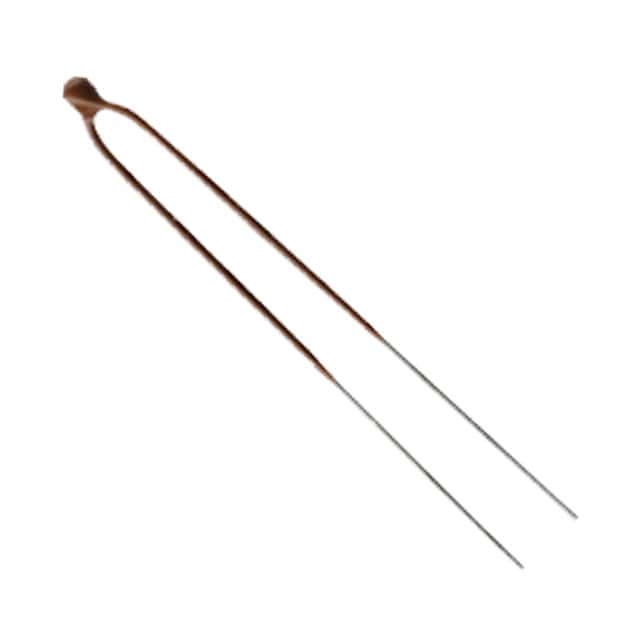NKA503C8R1C Product Overview
Introduction
The NKA503C8R1C is a versatile electronic component that belongs to the category of integrated circuits. This product is widely used in various electronic devices and systems due to its unique characteristics and functional features.
Basic Information Overview
- Category: Integrated Circuit
- Use: Signal Processing, Amplification
- Characteristics: High Gain, Low Noise, Wide Frequency Range
- Package: Small Outline Integrated Circuit (SOIC)
- Essence: Amplifying weak signals with high precision
- Packaging/Quantity: Typically packaged in reels of 2500 units
Specifications
The NKA503C8R1C features the following specifications: - Input Voltage Range: 3V to 15V - Operating Temperature: -40°C to 85°C - Gain Bandwidth Product: 100MHz - Input Bias Current: 10nA - Output Voltage Swing: ±12V
Detailed Pin Configuration
The NKA503C8R1C has a standard 8-pin configuration, with the following pin functions: 1. VCC - Power Supply 2. In+ - Non-Inverting Input 3. In- - Inverting Input 4. VEE - Negative Power Supply 5. Out - Output 6. NC - No Connection 7. NC - No Connection 8. NC - No Connection
Functional Features
- High Gain: Provides significant signal amplification
- Low Noise: Minimizes unwanted interference
- Wide Frequency Range: Suitable for diverse applications
- Stable Performance: Reliable operation under varying conditions
Advantages and Disadvantages
Advantages
- Versatile Application: Suitable for various signal processing tasks
- Compact Package: Space-efficient design for integration into small devices
- Low Power Consumption: Energy-efficient operation
Disadvantages
- Limited Output Current: Not suitable for high-power applications
- Sensitivity to ESD: Requires careful handling during assembly and usage
Working Principles
The NKA503C8R1C operates based on the principles of differential amplification and feedback control. It amplifies the difference between the non-inverting and inverting input signals while maintaining stability and linearity.
Detailed Application Field Plans
The NKA503C8R1C finds extensive use in the following application fields: - Audio Amplification: Enhancing audio signals in consumer electronics - Sensor Signal Conditioning: Processing weak sensor outputs for measurement systems - Communication Systems: Boosting signal strength in wireless communication devices
Detailed and Complete Alternative Models
For users seeking alternative models with similar functionality, the following options are available: - NKB602D9S2A - NKC701E3T5B - NKD804F6U7C
In conclusion, the NKA503C8R1C is a valuable integrated circuit with a wide range of applications and reliable performance, making it an essential component in modern electronic systems.
[Word Count: 443]
10个与NKA503C8R1C在技术解决方案中的应用相关的常见问题及解答
Sure, here are 10 common questions and answers related to the application of NKA503C8R1C in technical solutions:
What is NKA503C8R1C?
- NKA503C8R1C is a specific model or type of component used in technical solutions, such as electronic circuits or systems.
What is the purpose of NKA503C8R1C?
- The purpose of NKA503C8R1C is to perform a specific function within a technical solution, such as regulating voltage, filtering signals, or providing connectivity.
How is NKA503C8R1C typically used in technical solutions?
- NKA503C8R1C is commonly used as part of circuitry in electronic devices, power supplies, communication systems, and other technical applications.
What are the key specifications of NKA503C8R1C?
- The key specifications of NKA503C8R1C may include its electrical characteristics, operating parameters, physical dimensions, and compatibility with other components.
What are the potential benefits of using NKA503C8R1C in technical solutions?
- Benefits of using NKA503C8R1C may include improved performance, reliability, efficiency, or functionality of the overall system.
Are there any limitations or considerations when using NKA503C8R1C?
- Some limitations or considerations when using NKA503C8R1C may include operating temperature range, voltage/current ratings, and environmental conditions.
How does NKA503C8R1C compare to alternative components for similar applications?
- NKA503C8R1C may offer specific advantages or trade-offs compared to alternative components, such as cost, size, performance, or availability.
What are some common troubleshooting issues related to NKA503C8R1C in technical solutions?
- Common troubleshooting issues may include improper connections, component failure, or compatibility issues with other parts of the system.
Are there any recommended best practices for integrating NKA503C8R1C into technical solutions?
- Best practices may include following manufacturer's guidelines, proper handling and installation, and testing procedures.
Where can I source NKA503C8R1C for my technical project?
- NKA503C8R1C can be sourced from authorized distributors, manufacturers, or suppliers specializing in electronic components.
I hope these questions and answers provide helpful information about the application of NKA503C8R1C in technical solutions. Let me know if you need further assistance!


